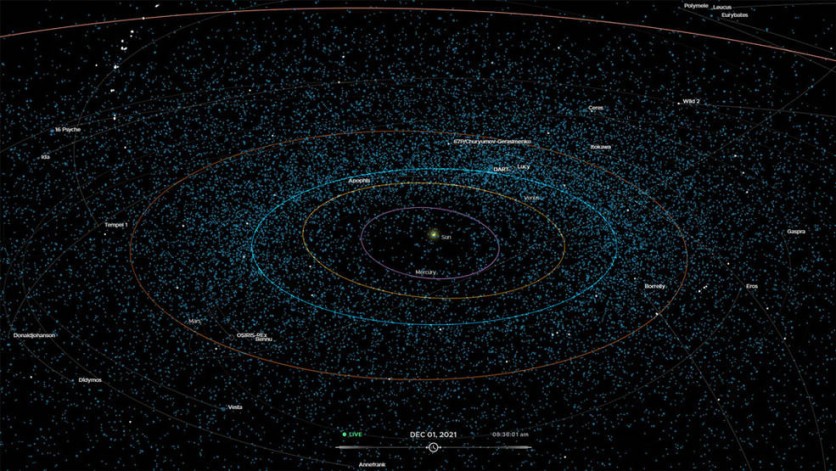NASA has launched its latest online tool that looks into space rocks called "Eyes on Asteroid," and it would help aspiring and astronomy fans locate the many celestial bodies near Earth's vicinity. The tool updates in real-time, and it helps in giving people a different perspective on the nearby space objects that surrounds the planet.
NASA 'Eyes on Asteroid' Online Tool Helps See Nearby Space Rocks

NASA reports that today, it has officially launched its "Eyes on Asteroid" online tool that looks into a bird's eye view of the planet, highlighting the space rocks that surround it. The online tool helps in the many discoveries of NASA that would list these space rocks for easier tracking for both the public and space agency.
The online tool will only be accessible via the official website of Eyes on Asteroid and will not require any downloads or applications to use it. The website would help identify and pinpoint the many celestial bodies surrounding the planet, which piques the interest of some space watchers.
The NASA Eyes on Asteroid focuses on near-Earth object mission discoveries, adding it to the website for new rocks to see.
NASA Online Asteroid Tool Updates in Real-Time for Discovery
NASA said that the online asteroid tool could bring in a real-time update to discover these new celestial bodies that surround the planet and have a massive population. The device itself receives twice-daily updates, says NASA, and it helps identify these new additions for easier access and knowledge on its existence.
NASA's Technologies Intended for Public Knowledge
NASA has debuted a lot of technology to the public, and it is intended for sharing its discoveries with the world, bringing a brighter and more clear view of what the vast space around us looks like. The most popular and influential tech of NASA released in 1990 and is still operational is the Hubble Space Telescope, still bringing people deep space photos.
Another example of NASA's public inclusion for its projects is the current plan to put a nuclear reactor on the Moon, inviting people and interested participants to join the mission. The invitation is to send in proposals and have the public view on the project, soon to be an experimental case of nuclear science to the lunar surface.
These inclusions of NASA are beneficial to the public and the many people that witness its track as the government and taxpayer's money funds it. However, it could stop at making this research available online. The tool by NASA is to help those fascinated or interested regarding asteroids to have more to see and experience as they do personal research.
Related Article : China's Hypersonic Aircraft Engine Bases Design from NASA's Scrapped Project in the 90s
This article is owned by Tech Times
Written by Isaiah Richard
![Apple Watch Series 10 [GPS 42mm]](https://d.techtimes.com/en/full/453899/apple-watch-series-10-gps-42mm.jpg?w=184&h=103&f=9fb3c2ea2db928c663d1d2eadbcb3e52)



